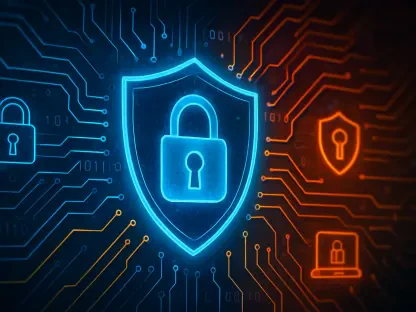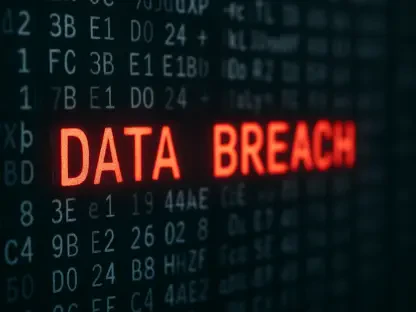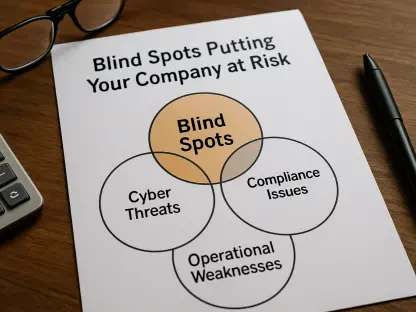The rapidly evolving landscape of business risks necessitates a shift from traditional, siloed Governance, Risk, and Compliance (GRC) frameworks to integrated models that encompass Environmental, Social, and Governance (ESG) considerations, cybersecurity threats, and regulatory requirements. Integrated GRC frameworks are becoming essential tools in modern risk management, offering organizations a more cohesive and strategic approach to handling these complex and interrelated risks. This article delves into how integrated GRC frameworks can effectively transform risk management across these domains.
The Need for Integrated GRC
Breaking Down Silos
The conventional approach to risk management often results in isolated efforts within ESG, cybersecurity, and regulatory domains. This siloed method can lead to redundant controls and missed opportunities for comprehensive risk management. Traditional frameworks typically operate these areas independently, creating gaps in coverage and inefficiencies. Organizations, therefore, face challenges in identifying overlapping risks and implementing holistic strategies to mitigate them effectively. Breaking down these silos is crucial for achieving a unified risk management strategy that can proactively address potential threats across all areas.
When risk management operates in silos, communication barriers arise, leading to inconsistent risk assessments and response strategies. ESG teams may not thoroughly consider cybersecurity risks, while compliance teams might overlook environmental impacts. This disjointed approach results in fragmented data and blind spots in risk detection, making it challenging to prioritize actions effectively. By dismantling the silos, organizations can integrate their risk management processes, enabling seamless information flow and a more robust understanding of risks. This holistic perspective is crucial for deploying comprehensive risk controls and enhancing overall organizational resilience.
Convergence of Risk Domains
As digital transformation accelerates, the lines between ESG, cyber, and regulatory risks are increasingly blurred. Integrated GRC approaches recognize this convergence and leverage cross-functional collaboration to achieve a holistic risk posture. The interconnected nature of these risks necessitates a cohesive strategy to manage them effectively. For instance, a cybersecurity breach might directly impact an organization’s ESG performance by causing data breaches that compromise customer privacy or by facilitating financial fraud. Similarly, evolving regulatory requirements often encompass both compliance and sustainability aspects, demanding an integrated approach.
With the convergence of risk domains, organizations must develop strategies that reflect the complex interplay between different risk factors. This entails aligning ESG goals with cybersecurity initiatives and regulatory compliance efforts. Integrated GRC platforms facilitate this alignment by providing real-time insights and analytics across multiple risk categories. Through these platforms, companies can identify and address vulnerabilities that may span multiple domains, thereby enhancing their risk posture. By recognizing the interconnectedness of risks, organizations can prioritize resources more effectively and implement comprehensive controls that reinforce resilience and ensure regulatory adherence.
Key Components of Integrated GRC
Enterprise Risk Taxonomy
Developing a comprehensive risk classification system is crucial for integrated GRC. This system should transparently map out the relationships between various risk categories, providing a unified view across ESG, cyber, and regulatory domains. Such a taxonomy facilitates the identification of risk interdependencies and enhances the ability to devise mitigation strategies that address multiple risks simultaneously. By establishing clear definitions and relationships among different risk types, organizations can standardize their risk assessment processes, reduce ambiguities, and ensure consistent evaluations across all domains.
An effective enterprise risk taxonomy enables organizations to prioritize risks based on their potential impact and likelihood. This prioritization is essential for directing resources towards the most significant threats, ultimately improving risk mitigation efforts. Furthermore, a well-structured risk taxonomy supports advanced risk analytics and reporting, allowing organizations to track risk trends over time and adapt their strategies accordingly. By fostering a common language for risk classification and assessment, this systematic approach promotes collaboration across departments and ensures a cohesive, organization-wide understanding of risk priorities.
Unified Control Framework
Mapping controls across different risk domains helps identify overlaps and opportunities for rationalization and automation. This ensures that all pertinent risks are covered without redundancy, maximizing efficiency and effectiveness. A unified control framework integrates ESG, cyber, and regulatory controls into a cohesive set of guidelines that streamline risk management processes. It eliminates duplicate efforts and conflicting controls, reducing operational complexities and fostering a more efficient risk management environment. Through this integration, organizations can achieve greater operational coherence and cost savings.
Creating a unified control framework also involves leveraging technology to enhance control effectiveness. Automation and real-time monitoring capabilities can empower organizations to swiftly detect and respond to emerging threats. For example, automated compliance checks and continuous security monitoring can proactively identify potential risks, enabling timely interventions. By consolidating and automating risk controls, companies can ensure a consistent application of policies across different functions, thereby enhancing their overall risk mitigation capabilities. This strategic alignment of controls supports a more resilient and adaptive risk management framework, capable of addressing the dynamic nature of modern business risks.
Implementing Integrated GRC
Integrated Technology Architecture
The deployment of solutions that dismantle data silos and foster information-sharing is pivotal. An integrated technology architecture allows for seamless communication and consolidation of risk data across different domains. This integration facilitates comprehensive risk assessments and enables the creation of a unified risk management dashboard that provides real-time insights into organizational risk exposure. Implementing such architecture involves choosing platforms that are versatile and capable of supporting various risk management functions, including risk identification, assessment, mitigation, and reporting.
Integrated technology architecture also enhances decision-making by offering a consolidated view of risks. Advanced analytics tools coupled with artificial intelligence can analyze data from disparate sources, uncovering risk patterns and correlations that might go unnoticed in siloed systems. This holistic view empowers organizations to make informed decisions based on a comprehensive understanding of risks, ultimately leading to more effective risk mitigation strategies. Furthermore, the architecture supports scalability, allowing organizations to adapt to evolving risk landscapes by integrating new risk categories and expanding their risk management capabilities as needed.
Continuous Monitoring Capabilities
Advanced analytics and artificial intelligence support real-time risk detection and monitoring. Continuous monitoring capabilities are integral to maintaining an adaptive and responsive approach to emerging risks across the integrated landscape. These technologies enable organizations to proactively identify and address potential threats, ensuring timely responses that mitigate impact. Continuous monitoring involves deploying sensors and automated tools that track various metrics across ESG, cyber, and regulatory domains, providing alerts when anomalies or deviations from established norms are detected.
By leveraging continuous monitoring, organizations can maintain a dynamic risk management posture that evolves with the changing risk environment. This approach ensures that risk controls remain effective and aligned with current threats. Advanced analytics can also provide predictive insights, helping organizations anticipate future risks and prepare accordingly. Through continuous monitoring, companies can enhance their resilience, reduce response times, and minimize the potential for significant disruptions. This proactive stance is crucial for safeguarding organizational assets and maintaining compliance with evolving regulatory requirements, ultimately supporting sustainable business practices.
Leadership and Cultural Adaptation
Cross-functional Governance
Establishing oversight mechanisms that bring together leaders from various departments is essential for aligning risk priorities. Cross-functional governance structures ensure cohesive decision-making and strategic alignment in risk management. These structures involve forming risk committees or councils composed of representatives from ESG, IT, compliance, and other business units. By fostering collaboration among these leaders, organizations can develop integrated risk strategies that consider diverse perspectives and expertise, resulting in more effective risk mitigation efforts.
Cross-functional governance also requires clear mandates and decision-making authority to drive meaningful changes. These governance bodies should have well-defined roles, responsibilities, and processes for assessing and addressing risks. Regular meetings and reporting mechanisms are essential for maintaining transparency and ensuring that risk priorities are consistently aligned with organizational objectives. By promoting open communication and shared accountability, cross-functional governance structures enhance the organization’s ability to respond to emerging risks in a coordinated and timely manner, ultimately supporting a more resilient and agile risk management approach.
Developing Multidisciplinary Talent
As the business risk landscape continually evolves, the need has emerged to shift from traditional, siloed Governance, Risk, and Compliance (GRC) frameworks to integrated models that encompass Environmental, Social, and Governance (ESG) considerations, address cybersecurity threats, and adhere to regulatory requirements. Converged GRC frameworks are becoming vital tools in modern risk management, enabling organizations to adopt a more unified and strategic approach to managing these complex and interconnected risks. This integrated approach not only helps in aligning the risk management strategies with organizational goals but also in enhancing the effectiveness and efficiency of governance practices. This article explores how integrated GRC frameworks can substantially transform risk management across various domains by fostering a cohesive approach that bridges the gaps between different risk areas. Integrated models help businesses anticipate emerging threats, ensure compliance with evolving regulations, and uphold ESG standards, thereby reinforcing organizational resilience and sustainable growth in a fluctuating business environment.









